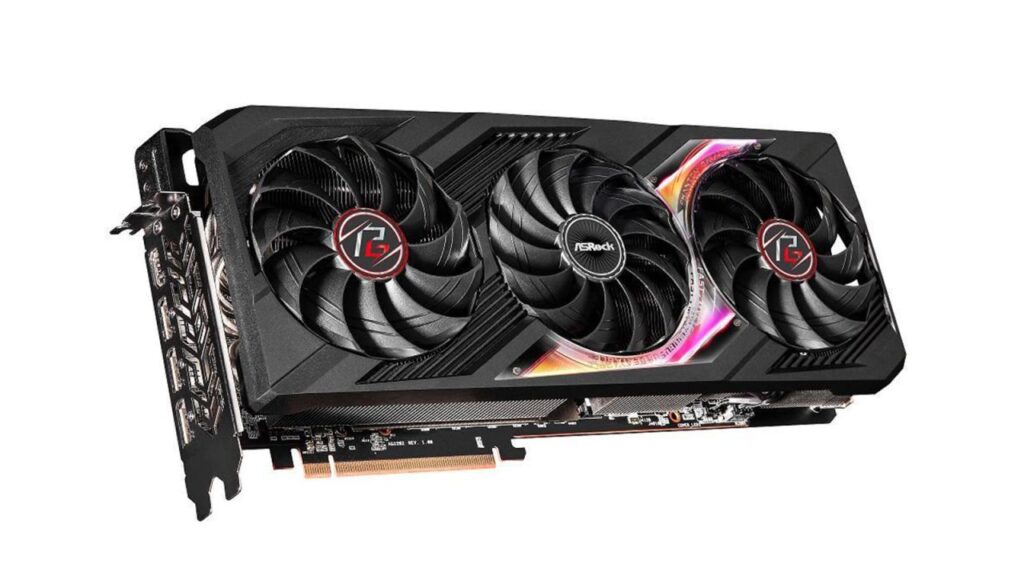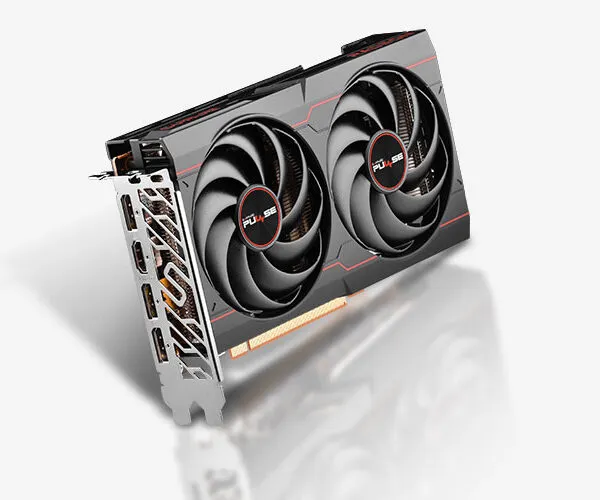Graphic card technology has come a long way since its inception, revolutionizing the world of computer graphics and profoundly impacting various industries. Understanding the basics of graphic card technology is crucial to grasp its evolution and appreciate its far-reaching influence.
Understanding Graphic Card Technology
The Basics of Graphic Card Technology
A graphic card, also known as a video card or GPU (Graphics Processing Unit), is a specialized electronic circuit that accelerates the creation and rendering of images, animations, and videos. It works in conjunction with the computer’s CPU (Central Processing Unit) to deliver enhanced visual experiences.
Graphic cards have revolutionized the way we interact with computers, enabling us to enjoy stunning graphics and immersive virtual worlds. Whether you’re a gamer, a graphic designer, or a video editor, understanding the technology behind graphic cards is essential for maximizing your computing power.
Key Components of a Graphic Card
A graphic card consists of several essential components, each playing a vital role in its performance:
- GPU: The heart of a graphic card, the GPU processes and renders images and videos. It is responsible for performing complex calculations and transforming raw data into visually appealing graphics. The GPU’s power and efficiency directly impact the quality of the visual output.
- VRAM: Video Random Access Memory stores visual data, textures, and frame buffers, providing fast access for rendering. VRAM acts as a temporary storage space for the graphic card, allowing it to quickly retrieve and process the necessary information. The amount and speed of VRAM significantly affect the graphic card’s ability to handle high-resolution textures and handle multiple tasks simultaneously.
- Cooling System: Graphic cards generate significant heat, necessitating efficient cooling systems such as fans or liquid cooling. The GPU and other components can reach high temperatures during intense usage, and without proper cooling, they may overheat and cause performance issues or even damage the card. Cooling systems ensure that the graphic card operates within safe temperature limits, allowing for sustained performance and longevity.
- Connectors and Ports: These facilitate the connection of the graphic card to the display, power supply, and other peripherals. The most common connectors include HDMI, DisplayPort, and DVI, allowing for high-quality video and audio transmission. Additionally, power connectors ensure that the graphic card receives sufficient power to operate optimally.
Understanding the key components of a graphic card helps in making informed decisions when purchasing or upgrading your system. By considering factors such as GPU power, VRAM capacity, cooling system efficiency, and compatibility with connectors and ports, you can choose a graphic card that meets your specific needs and enhances your computing experience.
The Evolution of Graphic Card Technology
The world of graphic card technology has come a long way since its humble beginnings in the 1970s. What started as simple 2D rendering capabilities has now transformed into sophisticated 3D graphics, capable of creating stunningly realistic visuals. Let’s take a closer look at the major milestones that have shaped the evolution of graphic card technology.
Early Developments in Graphic Card Technology

In the 1970s, the introduction of computer graphics and video games paved the way for the emergence of early graphic card technology. As processing power increased, so did the capabilities of these graphic cards. Basic graphical elements like pixels and vectors evolved into complex textures, shading, and lighting effects, bringing a new level of realism to digital visuals.
Major Milestones in Graphic Card Evolution
The late 1980s and early 1990s marked a significant turning point in the evolution of graphic card technology. During this time, several major milestones propelled the industry forward:
- The introduction of the VGA (Video Graphics Array) standard revolutionized the industry by offering higher resolutions and more colors. This allowed for more detailed and vibrant visuals, enhancing the overall gaming and computing experience.
- The emergence of the first 3D accelerator cards, such as the iconic 3dfx Voodoo, took graphic card technology to new heights. These cards enabled real-time rendering of 3D graphics, bringing a new level of immersion and realism to video games and other applications.
- Advancements in graphics programming played a crucial role in the evolution of graphic card technology. The introduction of DirectX and OpenGL APIs (Application Programming Interfaces) provided developers with powerful tools to harness the full potential of graphic cards, unlocking new possibilities in visual computing.
- A significant shift occurred from fixed-function pipelines to programmable shaders. This breakthrough allowed developers to have greater control over the rendering processes, enabling them to create more complex and visually stunning graphics.
Current Trends in Graphic Card Technology
The world of graphic card technology is constantly evolving, and there are several exciting trends shaping its current landscape:
- Inclusion of dedicated hardware for artificial intelligence and machine learning tasks has become a prominent trend in modern graphic cards. This integration enhances not only gaming experiences but also non-gaming applications, such as data analysis and scientific simulations.
- One of the most significant advancements in recent years is the implementation of real-time ray tracing technology. By simulating the behavior of light, graphic cards can now create stunningly realistic graphics, with lifelike reflections, shadows, and refractions.
- Energy efficiency and power consumption have become key considerations in the design of modern graphic cards. With the rise of mobile and low-power devices, manufacturers are striving to strike a balance between performance and energy efficiency, ensuring optimal user experiences without draining excessive power.
As we look to the future, it’s clear that graphic card technology will continue to push the boundaries of visual computing. With each new development, we can expect even more immersive and realistic graphics, revolutionizing the way we experience digital content.
The Impact of Graphic Card Technology
Influence on Gaming Industry
The gaming industry owes much of its progress to graphic card technology. By enabling visually immersive experiences, graphic cards have elevated gaming from simple 2D games to breathtaking virtual worlds. The realism and detail brought about by advanced graphics cards have captivated players worldwide.
With the advent of graphic card technology, game developers have been able to create stunning environments that transport players to fantastical realms. From lush forests to sprawling cities, the level of detail and realism in modern games is a testament to the capabilities of graphic cards. These powerful devices render complex textures, lighting effects, and realistic physics simulations, allowing players to fully immerse themselves in the virtual worlds they explore.
Furthermore, graphic cards have revolutionized multiplayer gaming experiences. With the ability to render high-resolution graphics and support advanced rendering techniques, graphic cards enable seamless online gameplay, where players can engage in intense battles, explore vast open worlds, and interact with other players in real-time.
Role in Advancing Computer Graphics
Graphic cards have been instrumental in developing computer graphics across industries. They power professional applications like video editing, CAD (Computer-Aided Design), and data visualization, enabling professionals to achieve higher levels of precision, realism, and efficiency in their work.
In the field of video editing, graphic cards accelerate rendering processes, allowing editors to work with high-resolution footage and complex visual effects in real-time. This not only saves time but also enhances the creative process, as editors can see their changes instantly without the need for lengthy rendering times.
CAD professionals heavily rely on graphic cards to visualize intricate designs and models. With the computational power of graphic cards, designers can manipulate complex 3D models, perform simulations, and analyze data more efficiently. This leads to faster design iterations, improved accuracy, and ultimately, better products.
Data visualization, another area greatly influenced by graphic cards, benefits from their ability to process large amounts of data and render complex visualizations in real-time. Whether it’s creating interactive dashboards, exploring complex datasets, or analyzing trends, graphic cards provide the necessary horsepower to handle the demands of data visualization.
Contribution to Virtual Reality and Augmented Reality

Virtual Reality (VR) and Augmented Reality (AR) heavily rely on powerful graphic cards to deliver convincing virtual worlds and seamless overlays on the real world. Graphic card technology plays a significant role in reducing latency, generating realistic graphics, and providing the necessary computational power for these immersive experiences.
In VR, graphic cards are responsible for rendering high-resolution, stereoscopic visuals at high frame rates to ensure a smooth and immersive experience. They also handle complex tracking algorithms, which accurately capture the user’s movements and adjust the virtual environment accordingly. Without powerful graphic cards, VR experiences would lack the realism and responsiveness that make them truly immersive.
Similarly, AR applications rely on graphic cards to seamlessly blend virtual objects with the real world. By accurately tracking the user’s surroundings and rendering virtual objects in real-time, graphic cards enable AR experiences that enhance our perception of reality. From interactive gaming experiences to practical applications like interior design and education, graphic cards are the backbone of AR technology.
In conclusion, graphic card technology has had a profound impact on various aspects of our digital lives. From revolutionizing gaming experiences to advancing computer graphics and enabling immersive virtual and augmented reality, graphic cards continue to push the boundaries of what is possible in the digital realm.
Future Prospects of Graphic Card Technology
Predicted Technological Advancements
The future of graphic card technology holds many exciting possibilities:
- Enhanced performance through increased GPU cores and improved memory bandwidth.
- Advancements in real-time ray tracing, enabling even more lifelike graphics.
- Integration of artificial intelligence for real-time content generation and enhanced visual effects.
With the rapid pace of technological advancements, graphic card technology is set to reach new heights. The continuous improvement in GPU cores and memory bandwidth will result in unprecedented performance levels. This means faster rendering times, smoother gameplay, and more immersive experiences for users.
Real-time ray tracing, a technique that simulates the behavior of light in a virtual environment, is poised to revolutionize computer graphics. By accurately modeling the way light interacts with objects, ray tracing can create incredibly realistic visuals, with lifelike reflections, shadows, and refractions. This advancement will bring a new level of visual fidelity to games, movies, and virtual simulations.
Another exciting development in graphic card technology is the integration of artificial intelligence. By leveraging AI algorithms, graphic cards can generate real-time content and enhance visual effects. This means that in the future, graphics will not only be more realistic but also more dynamic and responsive to user interactions. AI-powered graphic cards will open up new possibilities for interactive storytelling, personalized gaming experiences, and advanced visual analytics.
Potential Impact on Emerging Industries
As graphic card technology continues to evolve, its impact on emerging industries cannot be underestimated. From healthcare and scientific simulations to autonomous vehicles and smart cities, powerful graphic cards will be instrumental in pushing these industries forward.
In the field of healthcare, graphic cards are already being used to accelerate medical imaging processes, enabling faster and more accurate diagnoses. With further advancements, graphic cards will facilitate the development of virtual surgical simulations, allowing surgeons to practice complex procedures in a risk-free virtual environment. This technology has the potential to revolutionize medical training and improve patient outcomes.
Autonomous vehicles are another area where graphic cards will play a crucial role. These vehicles rely on advanced sensors and computer vision algorithms to navigate and make real-time decisions. Graphic cards with their parallel processing capabilities will enable faster and more efficient object recognition, enabling autonomous vehicles to better understand their surroundings and react to changing road conditions.
Smart cities, with their interconnected infrastructure and vast amounts of data, will greatly benefit from the power of graphic card technology. Graphic cards can handle the complex computations required for real-time analytics, enabling cities to optimize traffic flow, manage energy consumption, and enhance public safety. With the integration of AI, graphic cards can also analyze video feeds from surveillance cameras, detecting anomalies and potential threats in real-time.
The Role of Graphic Cards in Future Computing
Graphic cards are poised to become even more integral to future computing platforms:
- They will play a vital role in enabling real-time image processing and computer vision applications.
- As VR and AR become more prevalent, graphic cards will drive the seamless integration of virtual and physical worlds.
- With the rise of cloud gaming and remote workstations, graphic cards will power the streaming and rendering of high-quality graphics for users worldwide.
Real-time image processing and computer vision applications require immense computational power. Graphic cards, with their parallel processing capabilities, are perfectly suited for these tasks. They can process large amounts of visual data in real-time, enabling applications such as facial recognition, object detection, and augmented reality filters.
Virtual reality (VR) and augmented reality (AR) are rapidly gaining popularity across various industries. These immersive technologies rely heavily on graphic cards to deliver realistic and interactive experiences. Graphic cards are responsible for rendering high-resolution visuals, tracking head movements, and maintaining low-latency response times. As VR and AR become more prevalent, graphic cards will continue to push the boundaries of what is possible, blurring the line between the virtual and physical worlds.
The rise of cloud gaming and remote workstations has transformed the way we consume and create content. With graphic cards powering the streaming and rendering of high-quality graphics, users can enjoy graphically demanding games and applications without the need for expensive hardware. Cloud gaming platforms and remote workstations leverage the processing power of graphic cards in data centers, delivering a seamless and immersive experience to users worldwide.
In conclusion, the evolution of graphic card technology has not only elevated the gaming industry but has also transformed computer graphics and various other sectors. As we look to the future, the continued advancement of graphic cards promises even more impressive visual experiences and widespread applications across diverse industries.




